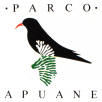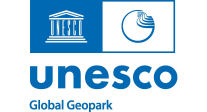|
|
|
|
|
|
|

|
37th EGN Coordination
Committee Meeting
Basque Coast
(Spain),
16th - 19th March 2016 |
|
|
|
|
|
|
|
PHOTO
CHRONICLE |
|
|
|
|
|
|
|
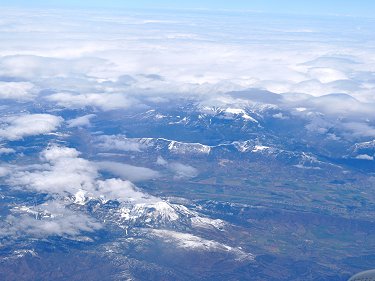
|
Wednesday 16.03.2016
Before landing in Bilbao, in the clouds you can see the latest
snow-covered foothills of north-western Pyrenees. |
|
|
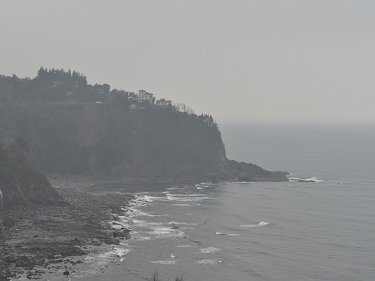
|
Wednesday 16.03.2016
The
Basque Coast Geopark welcomes delegations of 69 European Geoparks with
driving rain and gray skies. In the picture a section of the Cantabrian
Coast just east of the village of Mutriku, one of the municipalities
that together with those of Deba and Zumaia form the geopark territory. |
|
|
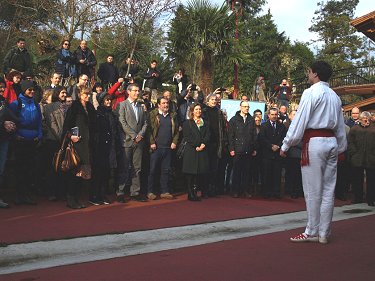
|
Thursday 17.03.2016
Before the meeting there was the unexpected performance of a Basque
dancer. |
|
|
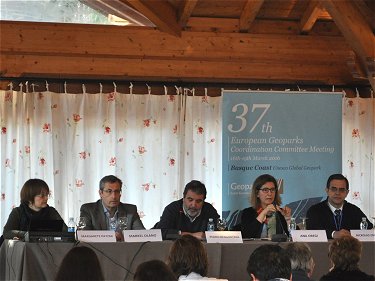
|
Thursday 17.03.2016
The
37th European Geoparks Coordination Committee has been hosted in the
little village of Itziar with the honourable presence of local, regional
and Basque authorities, among others, Ana Oregi, as Minister of the
Environment department, Markel Olano, President of the Regional Council
of Gipuzkoako Province and Pedro Bengoetxea, major of Deba and President
of the Basque Coast Geopark. The presentations by local authorities in
original Basque language underlined the strong cultural identity of
people living in this area. |
|
|
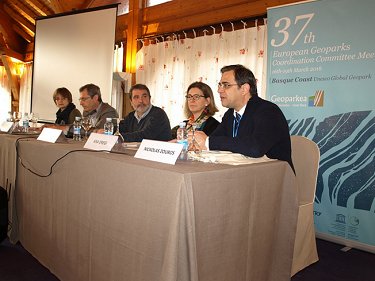
|
Thursday 17.03.2016
The EGN Meeting starts with the
speech of the GGN Coordinator, prof.
Nickolas Zouros. |
|
|
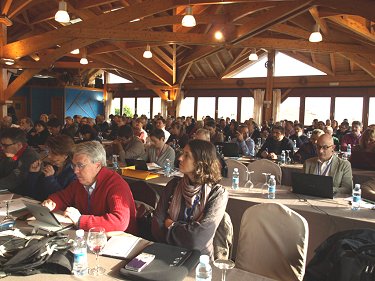
|
Thursday 17.03.2016
The conference room is very full of European Geoparks
representatives. |
|
|
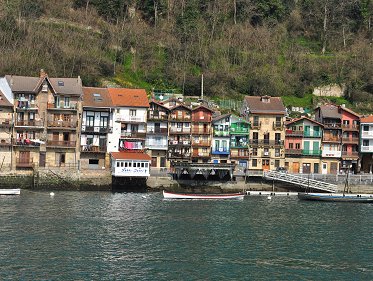
|
Thursday 17.03.2016
In
the afternoon the delegations moved to Pasaia village, along Oiartzun
river.
|
|
|
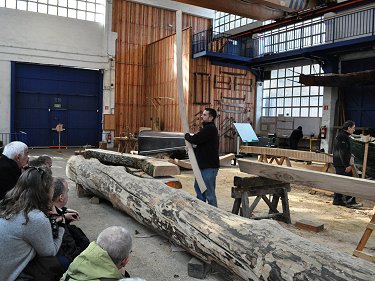
|
Thursday 17.03.2016
The
first visit is in Albaoloa, sea factory of Basques. It is the site of
the building of the "San Joan" replica of a 16th century whaleship.
The keel of the whaleship under construction is made of beechwood and
the rest of the hull of oakwood. The San Juan will have an overall
length of 28 meters and 30 meters of height. The building operation will
be finished by 2020. |
|
|
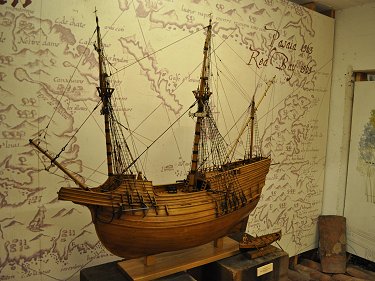
|
Thursday 17.03.2016
The
factory hosts an exhibition telling the history of the whaling ship San
Juan. It was built in 1563 and it was driven on the rocks and sank
shortly after in 1565. The underwater archeologists found the relict of
San Juan in the Red Bay in Canada. |
|
|
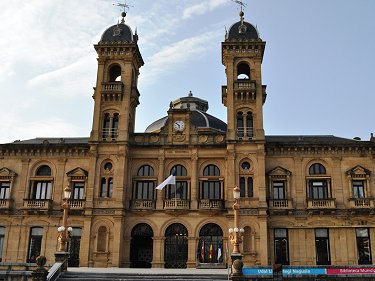
|
Thursday 17.03.2016
Next
stop concerned the visit of San Sebastian, European Culture City 2016.
The first stop was at the City Hall. The building was built up in 1887
along the main bay of San Sebastián, to house a casino, with sandstones from Paleocene-Eocene turbidite formation characterizing the San Sebastian
coast. |
|
|
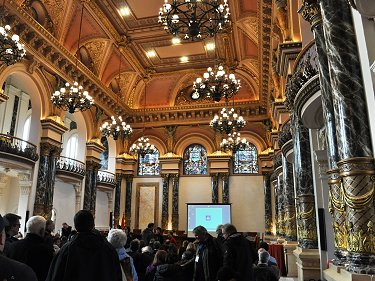
|
Thursday 17.03.2016
EGN
delegations were welcomed inside the City Hall main room by the mayor of
the city who presented some of the many events planned within the
project for San Sebastian European Culture City 2016 which includes
three “lighthouses”: Peace, Life and Voices.
. |
|
|
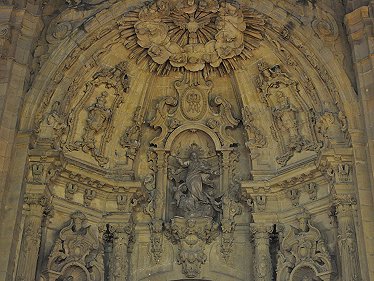
|
Thursday 17.03.2016
Stones from the local geological formation was employed earlier for
important buildings of San Sebastian, such as the façade of Santa Maria
Church, closing northward the Calle Mayor, in the old town of San
Sebastian. The church is an impressive 18th century Baroque Basilica.
|
|
|
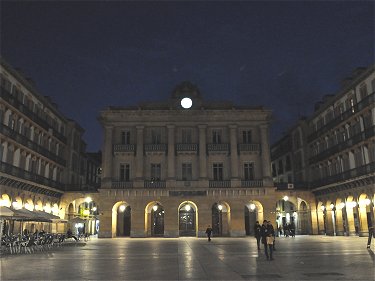
|
Thursday 17.03.2016
The
visit of San Sebastian ended when the darkness has already come. A night
view of the Constitution Square. In the past, it was used as bullring
(note the terraces from which spectators attended “corridas”). |
|
|
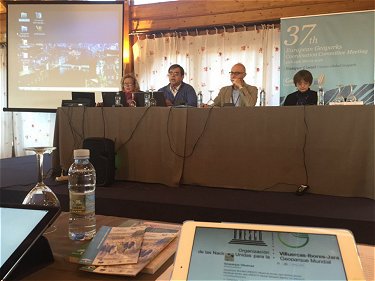
|
Friday 18.03.2016
Second Day of the EGN Coordination
Committee Meeting.
Maurizio Burlando (Beigua Geopark) is co-chairman. |
|
|
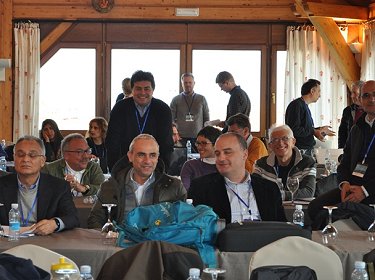
|
Friday 18.03.2016
Some of delegates of the Italian Geoparks at the Meeting. In the middle
foreground, Luigi Bloise and Egidio Calabrese from Pollino Geopark,
attending for the first time, after the EGN/GGN membership in past
September 2015, next to a veteran of geoparks, Pasquale Li Puma (with an
ascetic expression) and, on the right, to Francesco Chiaramonte. In the
background, from left to right, all smiling "the" Tullio Bagnati and
Edoardo Dellarole (val Grande-Val Sesia Geopark) and Violet Masé and
Roberto Zoanetti (Adamello-Brenta Geopark). |
|
|
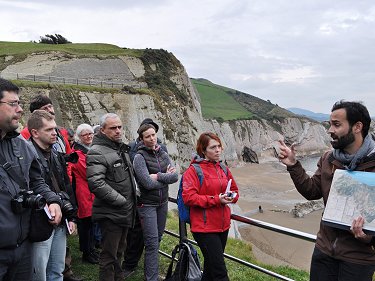
|
Saturday 19.03.2016
The field trip day has come! Even if it is a cloudy and rainy day, the
EGN delegates do not hide their expectation and emotion for the
discovering the Zumaia section, one of the global geological hotspots,
and from the first introductory stop they were concentrated listening
Asier Hilario, geologist and scientific coordinator of the Basque Coast
Geopark. In the background, the pinkish carbonate layers of Early
Paleocene age are already in evidence.
|
|
|
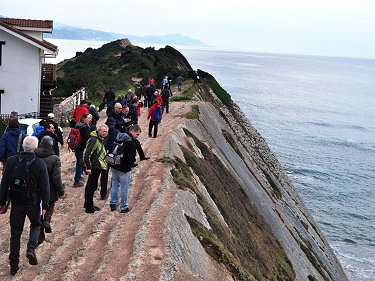
|
Saturday 19.03.2016
The impressive down “along bedding” to the K/T boundary, that is, the
transition between the Mesozoic and the Cenozoic era, between Cretaceous
and Paleogene. A dramatic moment in the history of life on Earth, which
was characterized by one of the largest mass extinctions of dinosaurs,
ammonites and other living species. |
|
|
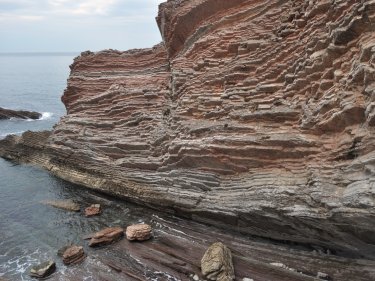
|
Saturday 19.03.2016
Here is the K/T boundary! High tide did not allow us to touch the
contact but it was still possible to appreciate its features. The lower
part of the outcrop attributed to the uppermost Cretaceous consists of
reddish marls and silty marls, while the less eroded limestone layer at
the base of the rock wall has been dated to the basal Paleocene. A
cm-thick level of gray clays marks the transition between Mesozoic and
Cenozoic eras. It is characterized by an iridium peak, testifying the
impact on the Earth's surface of a huge meteorite. In the Zumaia
section, this clay level is interrupted by a thin vein of calcite; it is
for this reason that, as underlined with slight disappointment by Asier
Hilario, the International Commission on Stratigraphy chose as global
reference for the K/T boundary the El Kef section in Tunisia. |
|
|
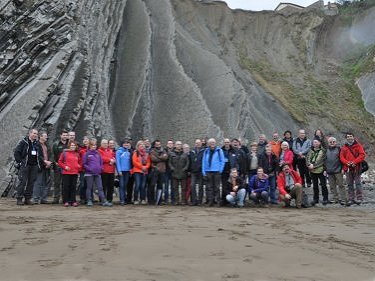
|
Saturday 19.03.2016
The extraordinary importance of the Zumaia section was still certified
within the Paleocene. In 2008 the International Commission on
Stratigraphy considered this section as global reference with regard to
the bases of Selandian (Middle Paleocene; 61.6 Ma) and the base of
Thanetian (Upper Paleocene; 59.2 Ma) stages. The group photo of
“geologists" at Itzurun beach with the background of this
chronostratigraphic range included in sequences of limestones and
marlstones. |
|
|
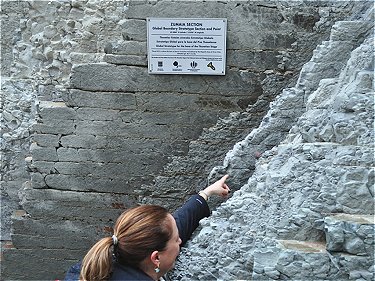
|
Saturday 19.03.2016
Dr.
Alessia Amorfini showed precisely the "golden spike" which marks the
global stratotype for the base of the Thanetian stage. |
|
|
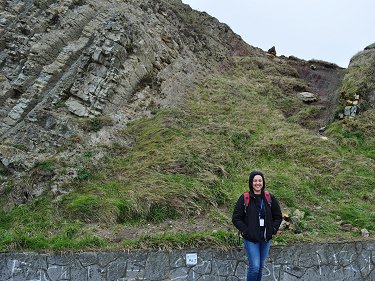
|
Saturday 19.03.2016
Moving up the geological time scale, the Zumaia section showed another
important moment: the boundary between Paleocene and Eocene epochs at
56.0 million years ago. The transition is marked by a more erodible 4
m-thick interval, made up of reddish marly shales and siltstones
intercalated between alternations of limestones and marlstones. Dr.
Alessia Amorfini, careless about the rain, was smiling in front of the
outcrop that marks the "passage" between Paleocene and Eocene.
|
|
|
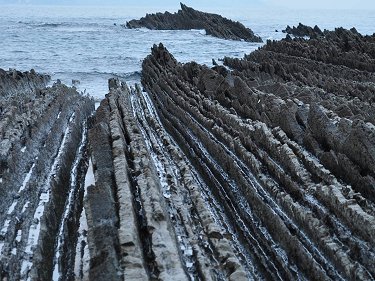
|
Saturday 19.03.2016
The coast is sculpted by sea and wind in a singular way.
This action shapes particularly the turbidite deposits, thanks to a
widespread phenomenon of differential erosion, depending of the
variability in rock hardness. |
|
|
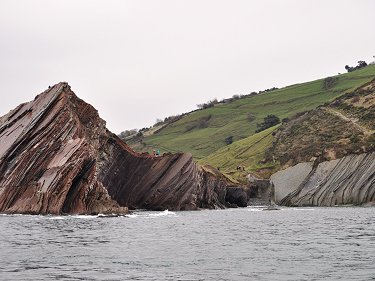
|
Saturday 19.03.2016
The day was rainy but fortunately the sea was calm and the organization
of the Basque Coast Geopark has been able to give to the EGN delegates a
short boat trip. The landscape is characterized by rock layers that seem
to emerge from the sea or dive into waters to return to the environments
of their ancient origin. In the photo the K/T boundary between the gray
sandstone turbidites of the upper Cretaceous (right) and the pinkish
alternations of limestones and marlstones of lower Paleocene age (left). |
|
|
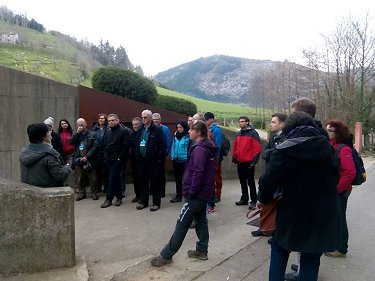
|
Saturday 19.03.2016
In the Geopark territory, Ekain is the major karst cave as it shows
exceptional artistic manifestations (paintings and engravings) created
by the inhabitants of the cave during the Upper Paleolithic era (about
13.000 years ago). In 2008, Ekain was declared World Heritage of
Humanity by UNESCO. The field trip stopped at the Ekainberri museum,
located 600 m away from the original cave, where a perfect copy of the
whole cave and its content has been completed and opened to the public
in 2008. |
|
|
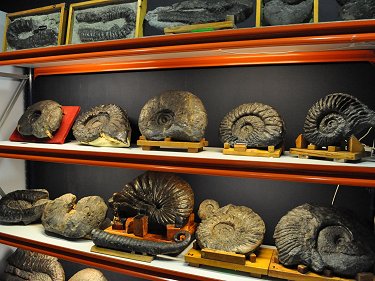
|
Saturday 19.03.2016
The field trip ended with the visit of the seaside village of Mutriku,
one of the municipalities of the Basque Coast Geopark. The program
includes a visit to the "Nautilus" Geological Interpretation Center
where giant ammonites from the surrounding clay formations (the
so-called "Black Flysch") of Albian age (Lower Cretaceous; more than 100
million years ago) have been gathered. These fossils were collected,
without a definite stratigraphic order, by Jesus Narvaez, a local
amateur paleontologist, over the past 30 years. The ongoing project of
the Geopark aims to give to the Mutriku fossils a correct stratigraphic
sequence. |
|
|
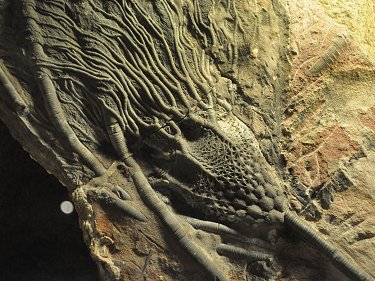
|
Saturday 19.03.2016
Not only ammonites...
as evidenced by this wonderful fossil crinoid.
|
|
|
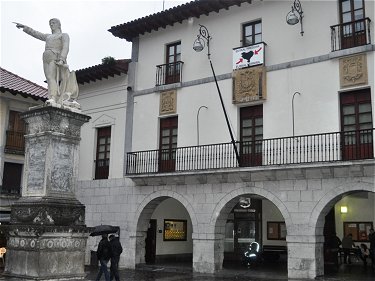
|
Saturday 19.03.2016
The visit continued in the historical centre of the village with the
same "mandatory" approach that emphasizes the link between the building
materials and the rocks outcropping in the area, basically limestones
and sandstones. The City Hall of Mutriku is an excellent example of the
use of local stones in architecture, such as those visible in gallery
arches and string course cornices. In front of the Palace, the statue of
Commodore Cosme Damián Churruca y Elorza, born in Mutriku in 1761 and
died in 1805 at the Battle of Trafalgar, in command of the ship San Juan
Nepomuceno. |
|
|
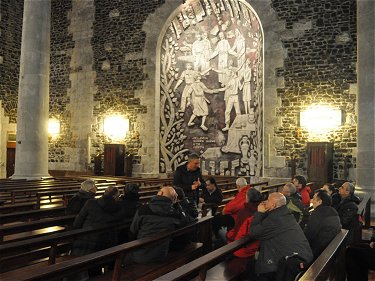
|
Saturday 19.03.2016
The interior of the church of Nuestra Señora de la Asunción in Mutriku.
As one of the best examples of neoclassical architecture, it has been
classified a national monument of the Basque Country.
.
|
|
|
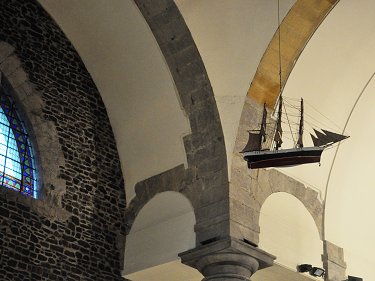
|
Saturday 19.03.2016
A model of whaling ship hanging as “ex voto” inside the church of
Mutriku.
|
|
|
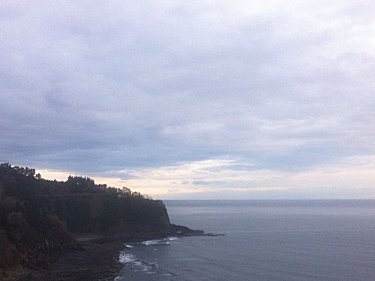
|
Sunday 20.03.2016
Last day in front of the Bay of Biscay.
Even that day was cloudy as you would expect for an Atlantic location
and climate.
|
|
|
 back to Conference page
back to Conference page |
|
|
|
|
|
|
|






























